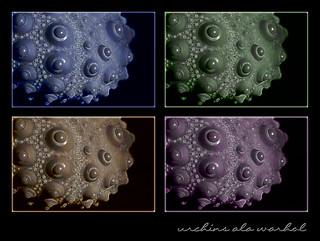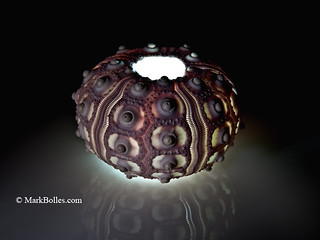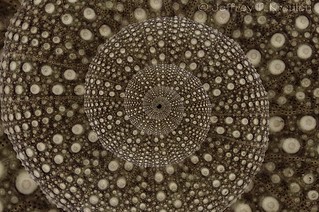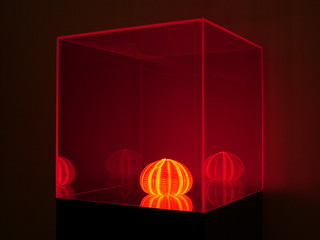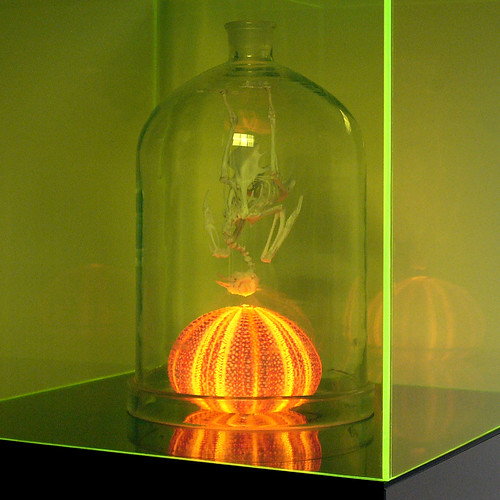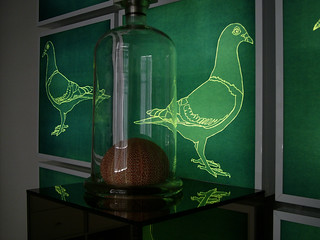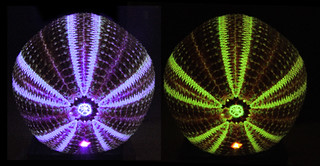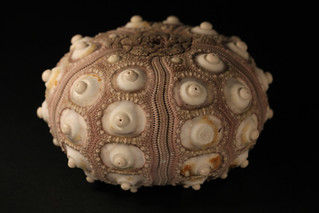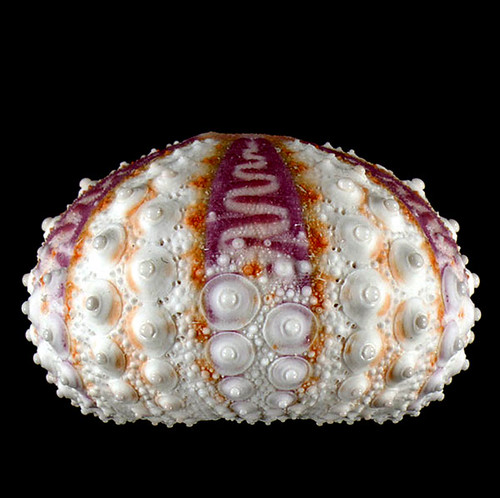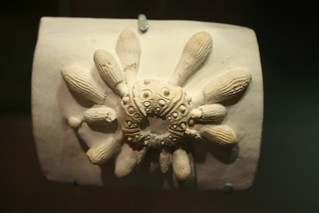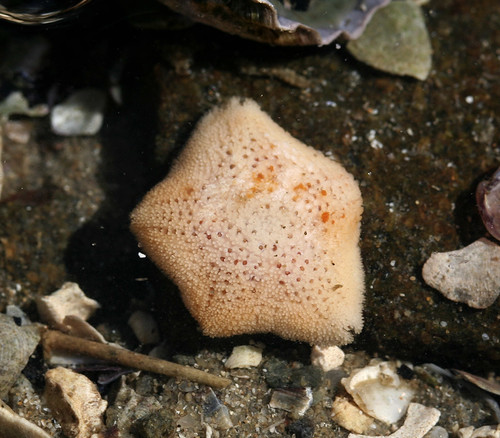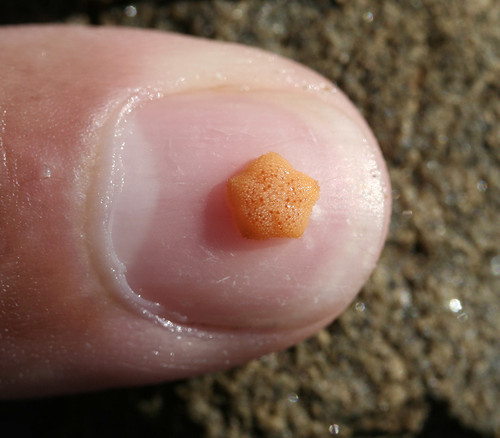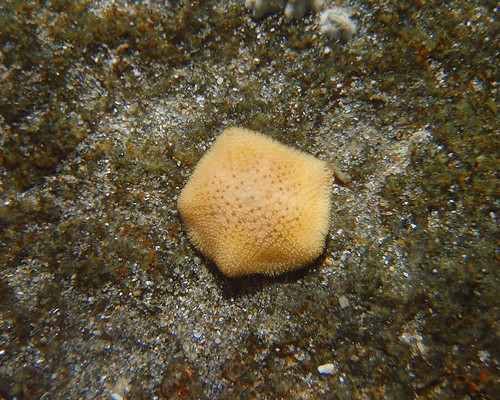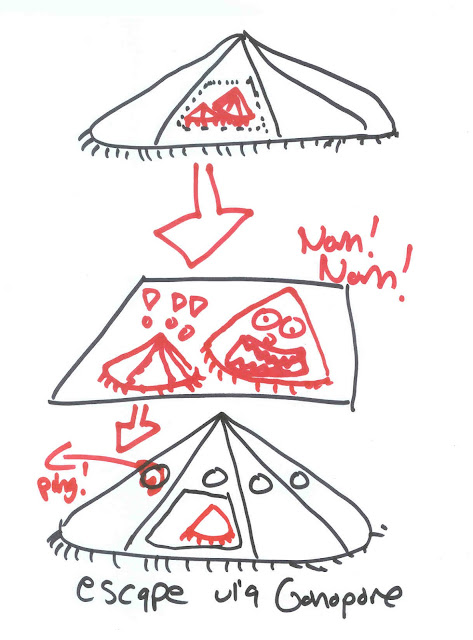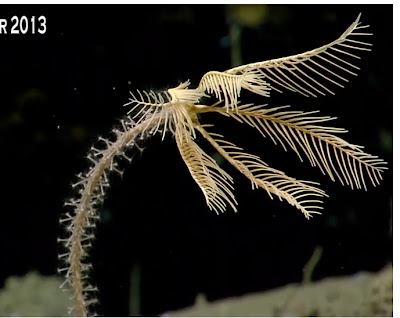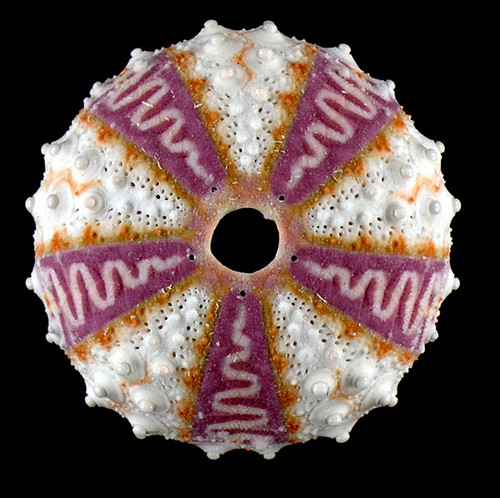
There is a natural and wonderful symmetry to many natural objects and echinoderms have always had a certain appeal to folks with artistic natures. Their skeletons are pentameral and often have no shortage of patterns and visually interesting processes. Go here to seem my SEM odyssey of the urchin test!
Sea urchins are no exception to this-and everyone I know who has ever found an intact sea urchin (or sand dollar) test on the beach is always delighted. A "test" is the name of a sea urchin skeleton. They don't have "shells".
Here's a nice example of a cidaroid sea urchin test. The spines attach to the "knobs" (called bosses) that are present on its surface.
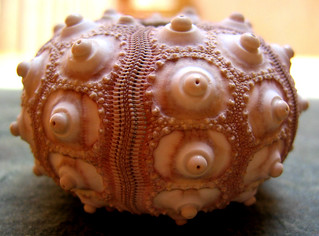 |
| sea urchin test by Rainy City |
Today, I thought I would present some of the many delightful examples that many of these tests have found their way into the creative processes of the wonderful artists on the Internet! Then compare below with some examples of sea urchin tests with their own innate artful patterns!
Cidaroid Urchins a la Warhol! by Calypso985
"Red Tide" part of an art exhibit featuring urchins with a distinctive presentation. Pic by Selene VomerCidaroid Urchins a la Warhol! by Calypso985
A stunning underlit cidaroid urchin test by Mark Bolles
A neat repeating Urchin Spiral by Jeff Kreulan "Algae Bloom" Image also by Selene Vomer. Chicken skeleton over urchin skeleton. Hm?
"Phosphorflock" Pic by Selene Vomer. I think its supposed to represent some kind of egg?
Here it is illuminated...
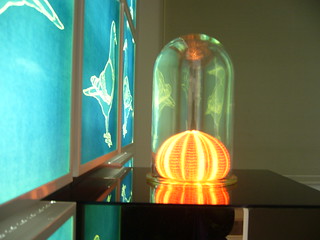 |
| Image by tiboutoo |
Illuminating or highlighting urchin tests with lights, lasers, fluorescence is a common theme...
An illuminated urchin by gmenut
One lit up with fluorescent lighting... "Voodoo Moon" by Sea Moon
"Sea Urchin Laser Fluorescence" by Bob Fosbury
And there's this stop motion classic "Javelin" by Ian McAlpin
Natural Beauty In contrast, here's some tests in their natural glory...
a cidaroid test by gripspix1
Another urchin test. Image by "fontplaydotcom"
The test of Coelopleurus exquisitus, a recently discovered New Caledonian sea urchin species, described by my colleague Simon Coppard, who found tests of this species on Ebay a few years ago!
Amazingly, the patterns? ARE NATURALLY OCCURRING. Those are on the test under the spines and all of the other structures and skin on the surface! They don't disappear after the animal has died. They are ingrained in the mineral structure of the test.
Both images below are by Simon Coppard
and we didn't even get started on Irregular urchins like Clypeaster and the other Sand Dollars..
